Home Depot Garden Center isn’t just a store; it’s a vibrant ecosystem of gardening possibilities. From the tiniest seed to the grandest landscaping project, Home Depot offers a comprehensive range of products and services to nurture your green thumb. This deep dive explores everything from their extensive product selection and helpful services to their customer experience and sustainability initiatives, painting a complete picture of this gardening haven.
We’ll uncover the secrets behind their seasonal offerings, compare them to competitors like Lowe’s, and even delve into the marketing magic that keeps gardeners coming back for more. Get ready to unearth the best-kept secrets of your local Home Depot Garden Center!
Home Depot Garden Center Product Range
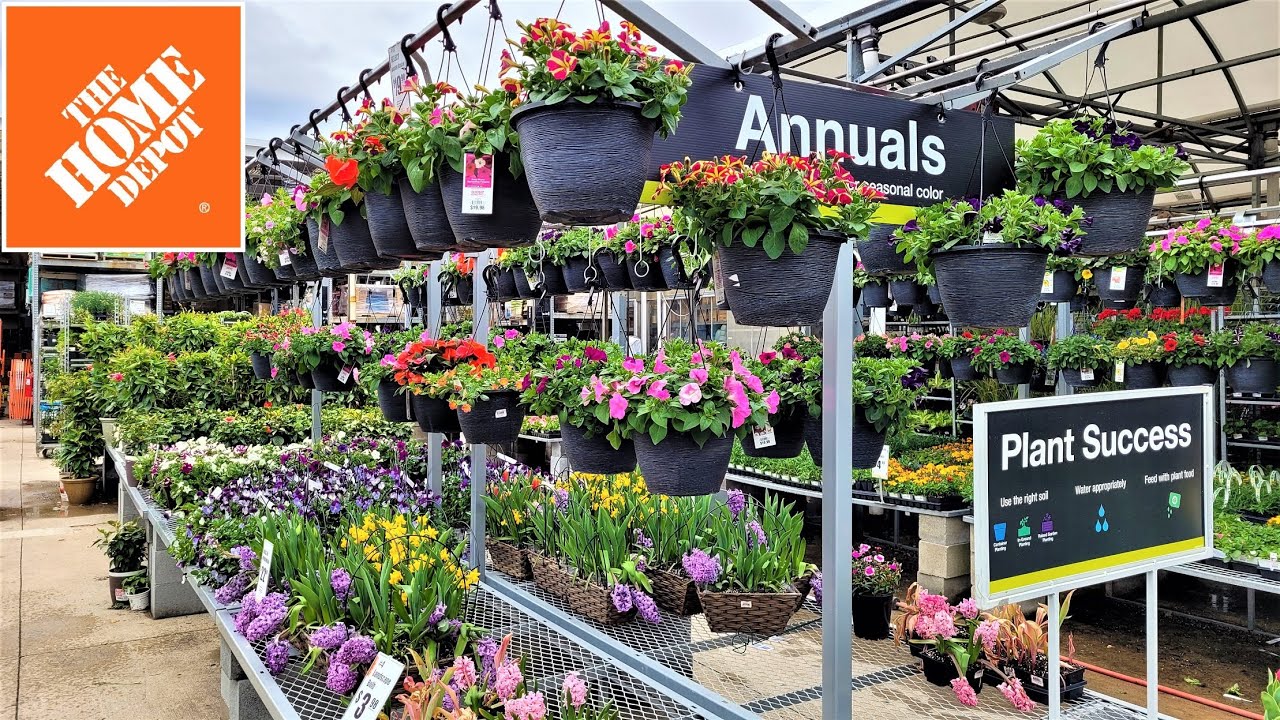
Home Depot’s garden centers are sprawling oases of gardening supplies, catering to both seasoned green thumbs and weekend warriors. From the smallest seed packet to the largest patio set, the selection is vast and designed to meet diverse needs and budgets. Understanding their product range is key to maximizing your gardening potential and finding exactly what you need for your project.
Product Categories at Home Depot Garden Centers
The sheer breadth of products available can be overwhelming, but a structured approach reveals a logical organization. The following table categorizes the extensive range offered by a typical Home Depot garden center. Note that specific availability may vary by location and season.
| Category | Subcategory | Example Products | Typical Price Range |
|---|---|---|---|
| Plants | Flowers | Roses, petunias, marigolds, impatiens | $5 – $50+ (depending on size and type) |
| Plants | Trees & Shrubs | Maple trees, azaleas, hydrangeas, juniper bushes | $15 – $500+ (depending on size and type) |
| Plants | Vegetables & Herbs | Tomato plants, pepper plants, basil, parsley | $3 – $10+ (per plant) |
| Lawn & Garden | Soil & Amendments | Potting soil, mulch, fertilizer, compost | $5 – $30+ (depending on size and type) |
| Lawn & Garden | Tools & Equipment | Shovels, rakes, hoes, lawnmowers, weed eaters | $10 – $1000+ (depending on type and features) |
| Lawn & Garden | Watering Supplies | Hoses, sprinklers, watering cans, drip irrigation systems | $5 – $200+ (depending on complexity) |
| Outdoor Living | Patio Furniture | Chairs, tables, umbrellas, grills | $20 – $1000+ (depending on material and style) |
| Outdoor Living | Decor | Statues, fountains, wind chimes, outdoor lighting | $10 – $500+ (depending on size and material) |
| Pest & Weed Control | Insecticides & Herbicides | Weed killers, bug sprays, fungicides | $8 – $30+ (depending on size and type) |
| Seeds & Bulbs | Flower Seeds | Sunflower seeds, poppy seeds, zinnia seeds | $2 – $10+ (per packet) |
| Seeds & Bulbs | Vegetable Seeds | Lettuce seeds, carrot seeds, bean seeds | $2 – $10+ (per packet) |
Seasonal Variations in Product Offerings
Home Depot garden centers strategically adjust their inventory to match seasonal demands. This ensures customers find what they need when they need it, from spring blooms to fall cleanup essentials.
Key seasonal changes and corresponding products include:
- Spring: A surge in flowering plants (annuals, perennials), vegetable and herb starts, lawn care products (fertilizers, seeds), and outdoor living items (patio furniture, grills).
- Summer: Emphasis shifts to drought-tolerant plants, pest control products, and irrigation supplies. Demand for outdoor entertaining items remains high.
- Fall: Focus on fall décor, bulbs for spring planting, and tools for leaf cleanup. Preparation for winterizing gardens takes center stage.
- Winter: Reduced selection of live plants, but increased availability of indoor plants, winter-hardy plants, and tools for snow removal (where applicable).
Comparison with Lowe’s Product Range
While both Home Depot and Lowe’s offer extensive garden centers, subtle differences exist in their product selections and emphasis.
Key differences include:
- Private Label Brands: Home Depot and Lowe’s each have their own private label brands for gardening products, leading to some unique product offerings.
- Product Selection Depth: While both stores carry a wide range, slight variations might exist in specific plant varieties or tool models available at each location. For example, one store might have a wider selection of organic gardening products, while the other focuses on a larger range of power tools.
- Pricing Strategies: While pricing is competitive overall, minor price discrepancies might exist on specific items depending on the time of year and promotions running at each store.
Home Depot Garden Center Services
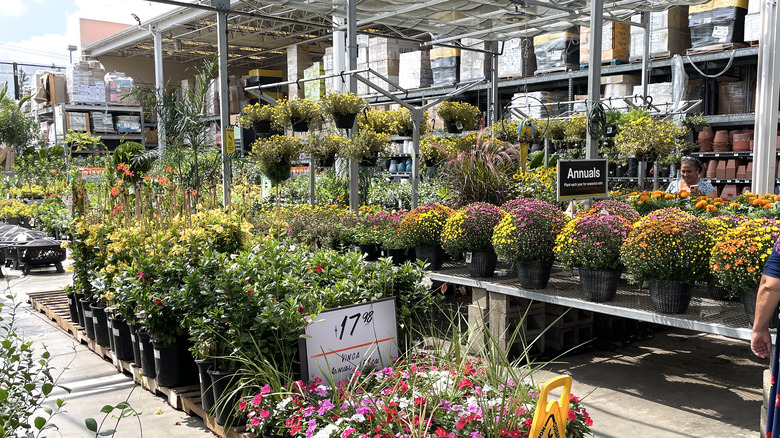
Navigating the world of gardening can feel overwhelming, but Home Depot’s garden centers aim to simplify the process by offering a range of helpful services beyond just product selection. From expert advice to convenient return policies, these services are designed to support every gardener, from seasoned pros to enthusiastic beginners. Understanding these services can significantly enhance your gardening experience and ensure you get the most out of your Home Depot visit.
Home Depot’s garden center services extend beyond simply selling plants and tools. They provide a comprehensive support system for all your gardening needs, ensuring a positive and successful gardening journey.
Customer Assistance Flowchart
The following flowchart illustrates a typical customer journey when seeking assistance at a Home Depot garden center. It Artikels the steps involved, from initial inquiry to resolution.
Imagine this flowchart: The process begins at the “Start” box. The customer approaches a garden center associate (box 2). If the associate can immediately answer the question (box 3, Yes), the process ends with customer satisfaction (box 8). If the associate cannot answer the question (box 3, No), they will either direct the customer to a specialist (box 4), such as a plant clinic expert or landscaping consultant, or seek assistance from a colleague or manager (box 5).
Home Depot’s garden center is a great starting point for any gardening project, offering a wide variety of plants, tools, and supplies. To truly see your vision come to life, though, you need a plan, and that’s where carefully designing your my home garden comes in. Once you’ve mapped out your ideal space, head back to Home Depot to pick up everything you need to make it a reality!
The specialist or colleague then addresses the customer’s question (box 6). If the question is resolved, the process ends with customer satisfaction (box 8). If the question remains unresolved (box 7), the customer may be given a contact number or further instructions for resolving the issue. The process concludes with either customer satisfaction or a commitment to follow-up.
Specialized Services Offered
Home Depot garden centers offer several specialized services to cater to diverse gardening needs. These services provide expert guidance and support, ensuring customers receive the best possible assistance.
- Plant Clinics: Experts diagnose plant problems, offering advice on treatment and care. This service can save struggling plants and prevent further issues.
- Landscaping Consultations: Experienced professionals provide guidance on designing and implementing landscaping projects, considering factors like space, sunlight, and desired aesthetic.
- Workshops and Classes: Home Depot frequently hosts workshops and classes on various gardening topics, offering practical, hands-on learning experiences for all skill levels. These might cover topics like composting, pruning, or specific plant care.
Plant and Supply Return/Exchange Process
Returning or exchanging plants or gardening supplies purchased at Home Depot is a straightforward process. Following these steps will ensure a smooth and efficient transaction.
Home Depot’s garden center is a one-stop shop for all your gardening needs, from vibrant flowers to sturdy tools. But even the most diligent gardener can face unwanted guests; that’s where understanding effective home-garden pest-control strategies becomes crucial. Fortunately, Home Depot also stocks a wide range of pest control solutions, ensuring your beautiful garden stays healthy and thriving.
- Locate your original receipt or proof of purchase. This is crucial for processing the return or exchange.
- Inspect the plant or gardening supply to ensure it’s in its original condition, unless damage occurred through no fault of your own. Home Depot’s return policy may vary based on the item’s condition.
- Visit the Home Depot garden center where you made the purchase, or a nearby location, with the item and your receipt.
- Approach a garden center associate and explain that you wish to return or exchange the item. Provide the receipt or proof of purchase.
- The associate will process the return or exchange according to Home Depot’s policy. This may involve a refund to your original payment method or an exchange for a different item of equal or greater value.
Home Depot Garden Center Customer Experience
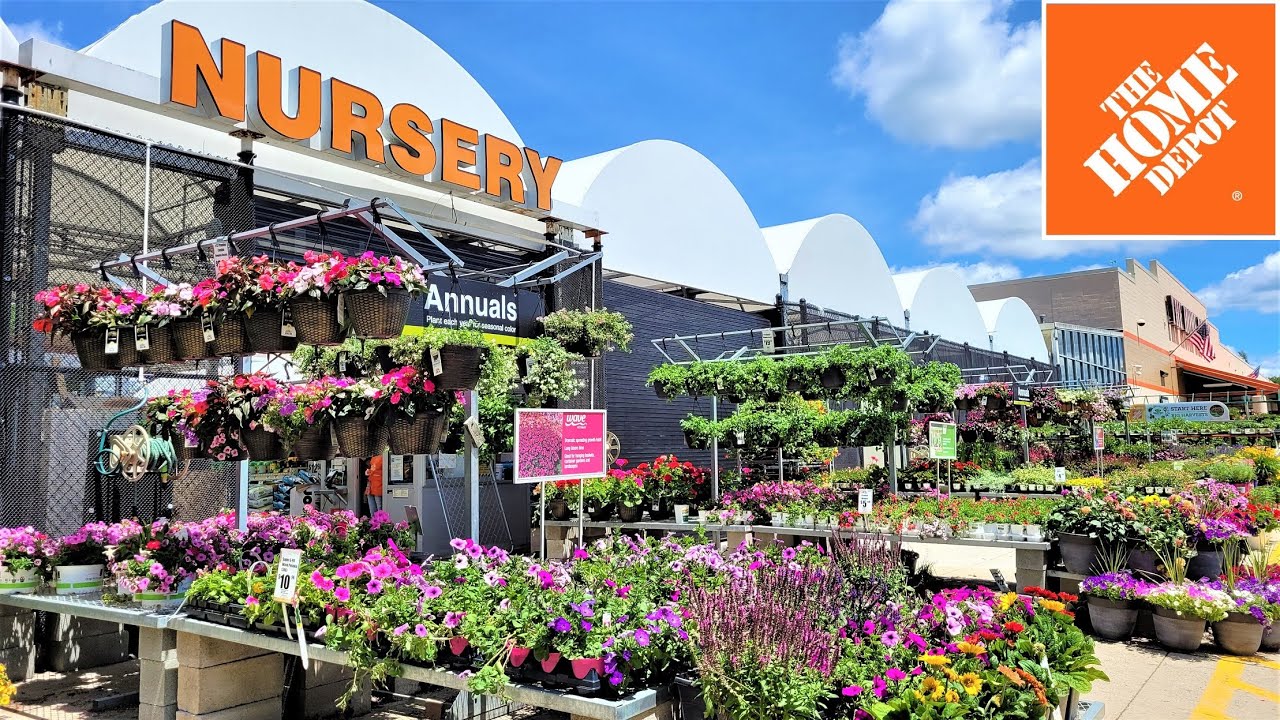
Navigating the world of home improvement can be daunting, but for the dedicated gardener, the Home Depot garden center represents a haven of possibilities. Understanding the typical customer, their needs, and their potential frustrations is key to optimizing the overall shopping experience. This section delves into the specifics of the Home Depot garden center customer experience, analyzing the typical shopper, common concerns, and the in-store environment’s impact on satisfaction.
A comprehensive understanding of the customer journey is crucial for retailers like Home Depot to enhance their services and maintain a competitive edge. By identifying common pain points and analyzing the store layout, improvements can be made to ensure a positive and efficient shopping experience for all.
Home Depot Garden Center Customer Persona
The typical Home Depot garden center shopper is likely a homeowner aged 35-65, with a moderate to high disposable income. They might be a seasoned gardener with years of experience, meticulously planning their landscaping projects, or a novice enthusiast eager to cultivate a vibrant garden, perhaps inspired by recent trends like container gardening or vegetable cultivation. Regardless of experience level, this customer is often driven by a desire to improve their home’s curb appeal, enhance their outdoor living space, or simply enjoy the therapeutic aspects of gardening.
Their purchase behavior varies; some make large, planned purchases like patio furniture or substantial amounts of topsoil, while others opt for smaller, more frequent trips for seeds, fertilizer, or replacement plants. They appreciate convenience, knowledgeable staff, and a wide selection of high-quality products.
Common Customer Complaints and Concerns
Customer satisfaction is paramount, and addressing common concerns is vital for Home Depot to maintain its reputation. Several recurring complaints regarding the Home Depot garden centers have been identified. These include:
- Lack of knowledgeable staff: Customers frequently report difficulty finding assistance from staff who possess sufficient horticultural expertise to answer their questions effectively. This is especially true for customers with more complex gardening needs or those seeking advice on specific plant care.
- Product availability and stock issues: Seasonal fluctuations in demand often lead to shortages of popular plants or gardening supplies. This can be frustrating for customers who have planned their projects around the availability of specific items.
- Inconsistent pricing and promotions: Discrepancies between advertised prices and those at checkout, or difficulty understanding complex promotional offers, can create negative experiences.
- Poorly maintained plants: Customers often complain about the condition of plants on display, noting wilting, damaged, or diseased specimens. This raises concerns about the quality of the products being sold.
- Difficult navigation and signage: The sheer size and variety of products can make it challenging for customers to locate specific items, especially if signage is inadequate or unclear.
Home Depot Garden Center Store Layout and Design
A typical Home Depot garden center is often designed with a logical flow, aiming to guide customers through various product categories. The layout usually starts with outdoor furniture and larger items, gradually transitioning to smaller items such as plants, soils, and tools. Signage plays a crucial role, ideally utilizing clear, concise labels and directional markers to improve navigation.
Product placement is strategic; high-demand items are typically placed prominently, while seasonal products are highlighted based on the time of year. The overall ambiance aims for a bright, airy feel, often enhanced by natural light and the presence of healthy, vibrant plants. However, inconsistent execution of these design elements across different locations leads to varied customer experiences. For instance, some locations excel in creating a visually appealing and well-organized space, while others may appear cluttered or disorganized, negatively impacting the overall shopping experience.
Home Depot Garden Center Marketing and Promotions
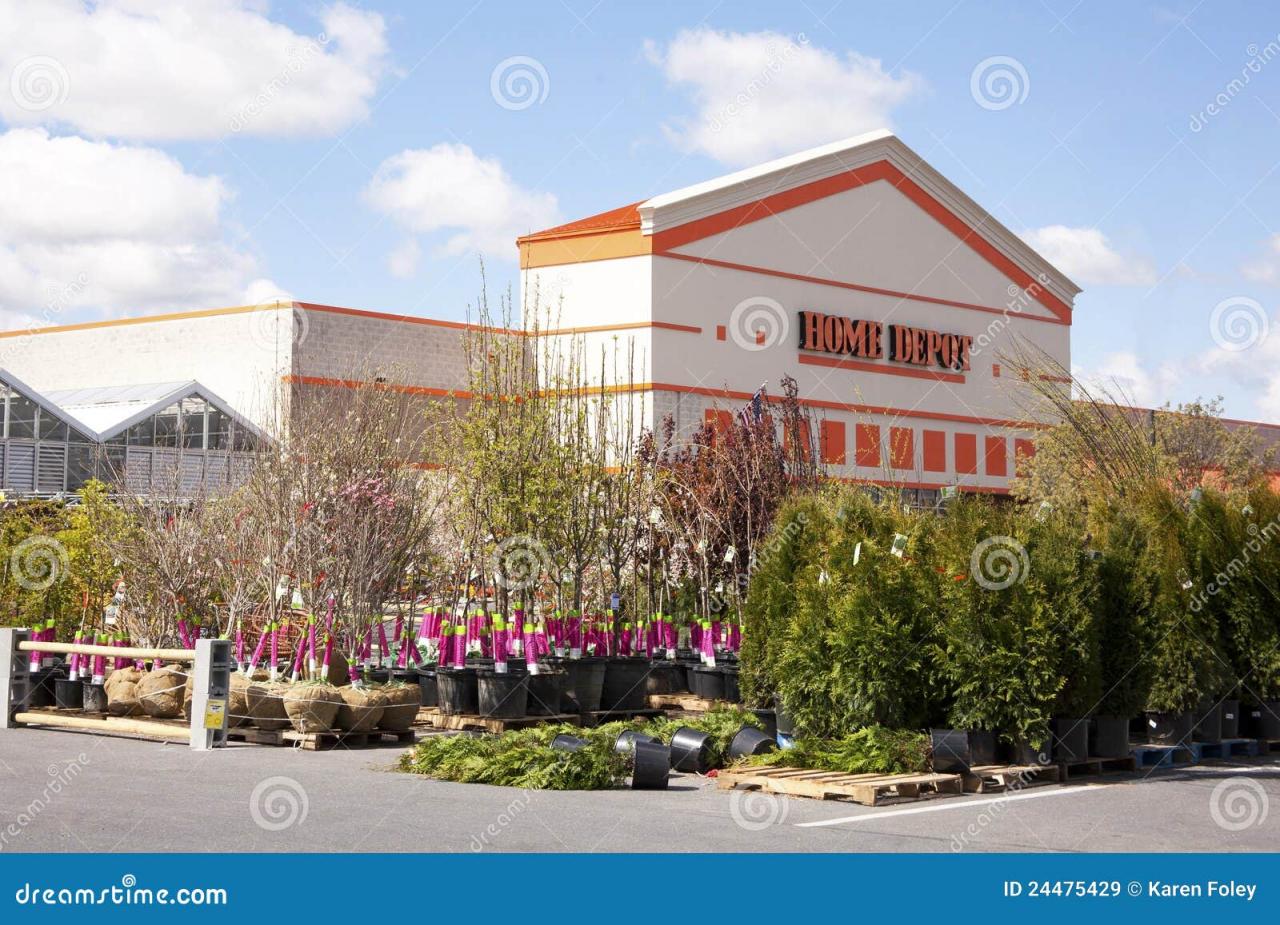
Home Depot’s success hinges on effective marketing strategies that not only drive sales but also cultivate a loyal customer base passionate about gardening. Their approach is multi-faceted, leveraging both traditional and digital channels to reach a broad audience and promote their extensive garden center offerings. Understanding these strategies provides insight into their market dominance and consumer engagement techniques.
Home Depot employs a variety of marketing strategies to promote its garden center, aiming to attract both seasoned gardeners and novice enthusiasts. These strategies work in concert to create a comprehensive marketing ecosystem.
Common Marketing Strategies Employed by Home Depot, Home depot garden center
Home Depot utilizes a diverse range of marketing tactics to maximize reach and impact. These strategies are carefully coordinated to ensure consistent messaging and brand recognition across all platforms.
- Targeted Advertising: Home Depot employs highly targeted digital advertising campaigns on platforms like Google Ads and social media, tailoring ads based on user demographics, location, and online behavior. This ensures that their messages reach the most relevant audiences.
- Seasonal Promotions and Sales: Capitalizing on seasonal interest, Home Depot frequently runs sales and promotions on specific garden center products, such as spring-blooming flowers, summer patio furniture, or fall mums and pumpkins. These promotions are often advertised heavily both in-store and online.
- Email Marketing: Home Depot maintains a robust email marketing program, sending out newsletters and promotional offers to subscribers. These emails often feature exclusive discounts and highlight new arrivals or seasonal items.
- In-Store Displays and Signage: Strategic placement of eye-catching displays and signage within the garden center itself plays a crucial role in driving impulse purchases and highlighting key products and promotions. This is a powerful tool for in-store marketing.
- Partnerships and Collaborations: Home Depot occasionally collaborates with gardening influencers or related businesses to expand their reach and build credibility within the gardening community. These collaborations often involve social media campaigns and joint promotions.
- Print Advertising: While less prevalent than digital marketing, Home Depot still utilizes print advertising in select publications and local newspapers, particularly for regional promotions and events.
Examples of Past Promotional Campaigns
Home Depot’s past promotional campaigns demonstrate a keen understanding of their target audiences and their evolving needs. These campaigns are designed to resonate with specific groups and promote particular products or services.
- Campaign: “Spring into Savings”
Target Audience: Homeowners preparing their gardens for spring.
Key Message: Discounted prices on seeds, plants, and gardening tools to kickstart the gardening season. - Campaign: “Summer Patio Paradise”
Target Audience: Homeowners looking to enhance their outdoor living spaces.
Key Message: Focus on outdoor furniture, grills, and patio décor, emphasizing relaxation and entertainment. - Campaign: “Fall Harvest Celebration”
Target Audience: Homeowners interested in fall decorating and gardening tasks.
Key Message: Discounted mums, pumpkins, and fall-themed decorations, promoting a festive atmosphere.
Examples of In-Store Displays and Signage
Home Depot’s in-store displays and signage are meticulously designed to guide customers, highlight seasonal offerings, and stimulate purchases. The visual merchandising strategy is crucial for driving sales within the garden center.
- Spring Display: A vibrant display featuring colorful annual flowers arranged in tiered planters, accompanied by signage promoting “Spring Planting Essentials” and highlighting discounted seed packets and gardening gloves. The display would be located near the entrance to the garden center to attract immediate attention.
- Summer Display: A large, eye-catching display showcasing various patio furniture sets, grills, and outdoor lighting fixtures. Signage might read “Create Your Outdoor Oasis” and include promotional offers on select items. This display would likely be situated in a high-traffic area of the garden center.
- Fall Display: A rustic display featuring pumpkins, gourds, mums, and fall-themed decorations. Signage might advertise “Fall Festival Savings” and highlight discounts on seasonal items. The display would utilize warm colors and textures to evoke a cozy, autumnal atmosphere.
Home Depot Garden Center Sustainability Initiatives
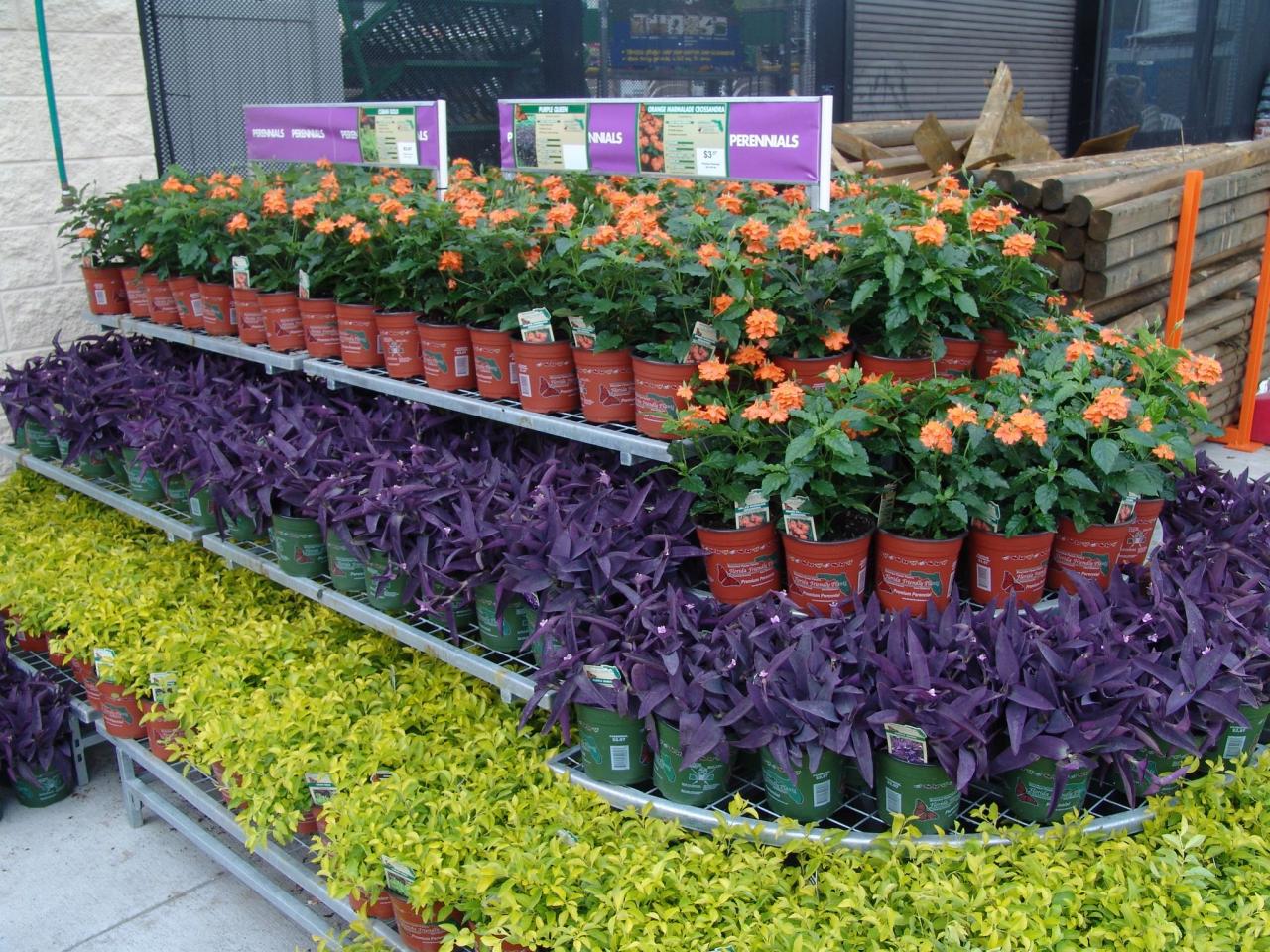
Home Depot’s commitment to sustainability extends beyond its core business model, deeply integrating eco-conscious practices into its garden centers. This commitment reflects a growing awareness of environmental responsibility within the retail landscape and a proactive approach to minimizing the company’s environmental footprint. The initiatives detailed below showcase Home Depot’s efforts to create a more sustainable future for gardening and landscaping.
Home Depot’s garden centers actively participate in several sustainability programs, aiming to reduce their environmental impact and promote environmentally friendly choices for customers. These efforts contribute to a broader movement towards responsible resource management and conservation.
Eco-Friendly Products Offered at Home Depot Garden Centers
Home Depot’s sustainability efforts are significantly bolstered by its wide range of eco-friendly products. These products provide customers with sustainable alternatives for their gardening needs, promoting environmentally responsible consumption.
- Organic and Non-GMO Seeds and Plants: The availability of organic seeds and plants reduces reliance on harmful pesticides and promotes biodiversity.
- Recycled and Sustainable Gardening Supplies: Home Depot offers pots, containers, and other gardening supplies made from recycled materials, reducing waste and promoting circular economy principles.
- Water-Wise Landscaping Products: Drought-tolerant plants and water-efficient irrigation systems help conserve water, a crucial resource, especially in arid regions. This includes products like drip irrigation systems and rain barrels.
- Eco-Friendly Fertilizers and Pesticides: Home Depot stocks a selection of organic and less-toxic fertilizers and pest control solutions that minimize the environmental impact of gardening practices.
Home Depot Garden Center’s Contribution to Environmental Conservation
The collective impact of Home Depot’s garden center initiatives significantly contributes to environmental conservation. These efforts demonstrate a commitment beyond simply offering eco-friendly products.
- Reduced Water Consumption: Promoting water-wise landscaping practices and offering water-efficient products directly reduces water usage, a crucial factor in combating water scarcity.
- Waste Reduction: The availability of recycled products and initiatives promoting responsible waste disposal minimize the amount of waste ending up in landfills.
- Biodiversity Promotion: Offering a wide selection of native plants and organic seeds supports local ecosystems and biodiversity, creating healthier and more resilient environments.
- Reduced Pesticide Use: Promoting the use of organic and less-toxic pesticides minimizes harmful chemical runoff into waterways and soil, protecting both aquatic and terrestrial life.
Comparison of Home Depot’s Sustainability Practices with a Competitor (Lowes)
A comparison with a key competitor, Lowe’s, highlights Home Depot’s position within the industry’s sustainability landscape. While both companies offer eco-friendly products, specific initiatives and emphasis may vary.
| Practice | Home Depot | Lowe’s |
|---|---|---|
| Organic Product Selection | Wide range of organic seeds, plants, and fertilizers. | Offers organic options, but the selection might be smaller compared to Home Depot. |
| Water Conservation Initiatives | Prominently features water-wise landscaping products and educational materials. | Offers water-efficient products but may not have the same level of educational outreach. |
| Recycled Product Offerings | Significant range of recycled pots, containers, and other gardening supplies. | Offers some recycled products, but the selection might be less extensive. |
| Waste Reduction Programs | In-store recycling programs and partnerships with recycling organizations. (Specific programs may vary by location) | Similar in-store recycling programs, but the scale and scope might differ. (Specific programs may vary by location) |